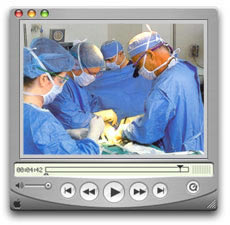Untying Tied Tubes
Tying Tubes
 Many people seem to imagine the fallopian tube is like a shoe lace that is tied in a bow to prevent pregnancy. As a tubal ligation reversal specialist, I wish it were that simple- then reversing tied tubes would be a whole lot easier!
Many people seem to imagine the fallopian tube is like a shoe lace that is tied in a bow to prevent pregnancy. As a tubal ligation reversal specialist, I wish it were that simple- then reversing tied tubes would be a whole lot easier!
Perhaps a well meaning doctor may have told a patient one day, “I am going to tie your tubes so you don’t get pregnant.” Maybe the doctor wrote a letter to a medical journal explaining the procedure and then the terminology stuck. More likely, a reporter may have simplified the terminology for the surgical procedure of tubal ligation to make a catchy title for an article. Others may then have started using the term “tying tubes” to quickly explain a complex procedure. These explanations often have a long life span and make their way into common language.
The more accurate terminology is bilateral tubal occlusion (closure of both fallopian tubes) which results in sterilization (not being able to conceive). There are many ways to perform bilateral tubal occlusion. The most common tubal sterilization procedure is performed at the time of cesearean delivery (c-section) or immediately after having a baby. It does involve tying the tubes with a suture - but then also cutting out a segment of healthy tube, resulting in closure of the tube as it heals. The suture then dissolves. The intial suture tying is most likely where the phrase ‘tying tubes’ came from.
Another common method is to burn the tubes with electrical energy (electrocoagulation). This is usually done by laparoscopic surgery and is usually done remote from pregnancy. Lastly, there are many devices- clips and bands - which can close off the tubes and cause a portion of the tube to be destroyed.
No matter how the procedure is done, the end result is obstruction of the fallopian tube that prevents pregnancy.
Many people believe that tubal sterilization is irreversible. Although bilateral tubal occlusion is intended to be permanent, the procedure can be reversed. Chapel Hill Tubal Reversal Center is the one medical facility that specializes exclusively in reversal of tubal ligation. We have become tubal ligation reversal experts………experts at untying tied tubes!
Submitted by Dr. Charles Monteith


May 1st, 2008 at 9:01 pm
Women often receive little education from their doctors regarding sterilization before having the procedure performed. This information is a clear, simple explanation for the most common question we receive!
May 1st, 2008 at 11:39 pm
I think that this information will help many women out there understand what they actually had done at the time of there tubal ligation. Many times we get calls from patients who are upset when they find out that a piece of tube was actually removed. They often say, “I thought my doctor said he was just tying my tubes.” It is good to know that this procedure which is referred to as permanent in most cases is not so permanent after all. This is a great option for women out there who have had decided that they once again would like to have another child as well as those who have decided that they want to have a child for the first time.
May 2nd, 2008 at 6:29 am
I believe that women should now what they are having done and have all questions answered about there tubal reversal procedures. One thing that I really enjoy about working at Chapel Hill Tubal Reversal Center is that it’s a more personal setting than any other clinic or hospital, and we take the time to fully educate patients them about their options regarding having tubes untied.
May 2nd, 2008 at 6:47 am
Chapel Hill Tubal Reversal Center is the only medical facility specializing exclusively in tubal ligation reversal. The staff are dedicated and the care is more personalized than the care that is received in a large hospital. I am not aware of any other facility that provides support for non urgent concerns during the evenings, weekends and holidays.
May 2nd, 2008 at 7:22 am
Thank you Dr. Monteith for the explanation, I believe alot of woment thought just what you stated , that the tubes are just tied off with something. Doctors have never gone into any detail to explain the actual precedure to women after child birth. I am sure the way you explained the precedure will help many women understand.
May 2nd, 2008 at 9:00 am
Patients may find out how their tubes were tied by requesting a copy of their operative report from the hospital where the tubal ligation surgery was performed. Mail or fax us the oeprative report and Dr. Berger will review it free of charge. A nurse will contact you to discuss scheduling your tubal reversal surgery.
May 2nd, 2008 at 10:41 am
When a patient calls to inquiry about the tubal reversal for the first time, I ask them if they know what type of tubal ligation her doctor performed. The patient usually says “They were just tied”. Patients normally do not know that they in fact did not have their tubes “tied”, but rather clipped, burned, and/or resected. Lucky for our patients, Dr. Berger is able to repair the tubes in 98% of cases and has reversed all types of tubal ligations.
May 2nd, 2008 at 10:44 am
A wonderful analogy, thank you Dr Monteith!